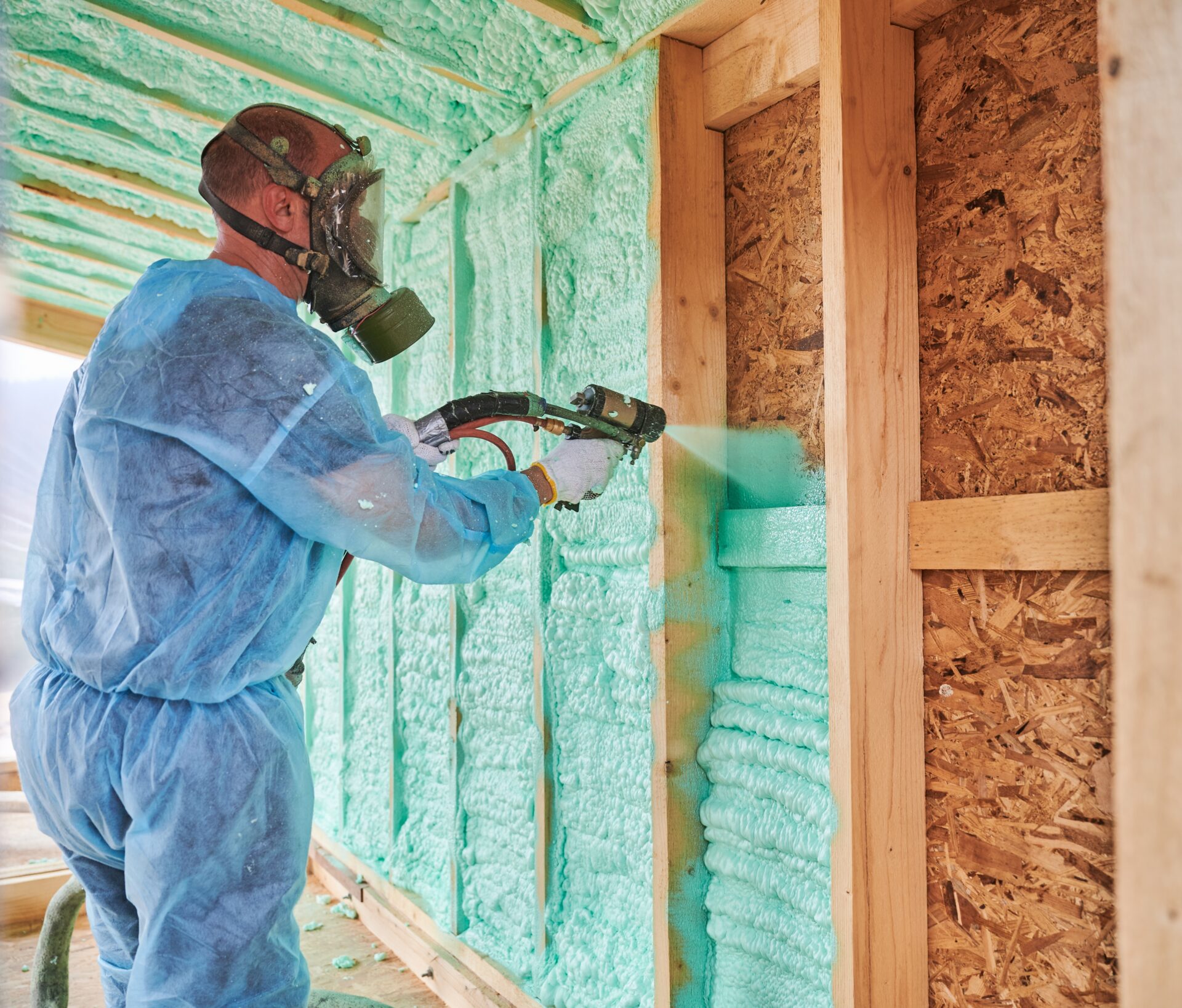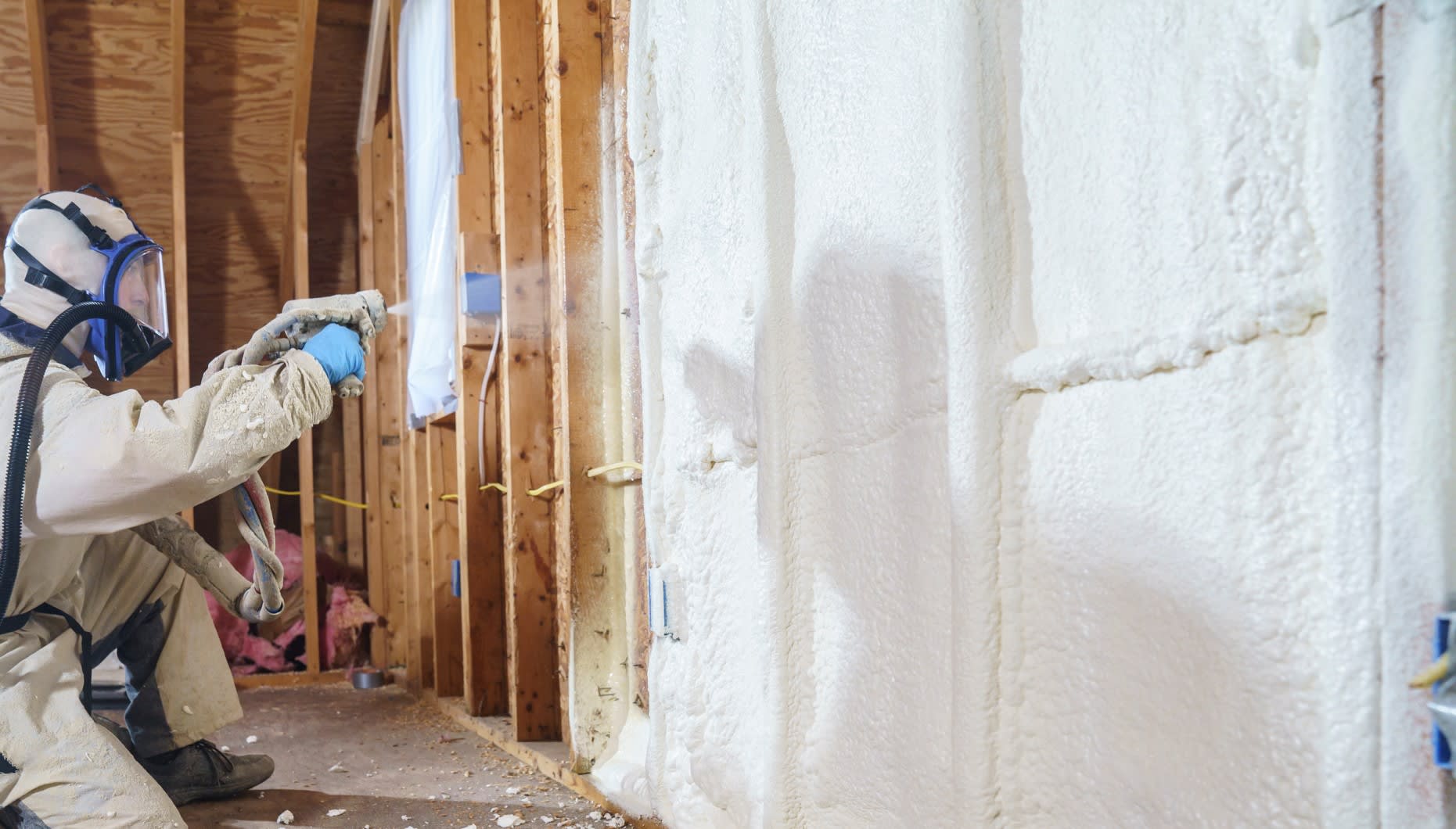Comprehending the Benefits of Using Spray Foam for Insulation Projects
Comprehending the Benefits of Using Spray Foam for Insulation Projects
Blog Article
Spray Foam: The Ultimate Option for Air Sealing and Insulation
Spray foam insulation has become a leading service for efficient air sealing and thermal insulation, providing an unique combination of properties that establish it apart from typical techniques. Its ability to increase and fill voids makes it particularly reliable in avoiding air leakage, which can substantially influence power performance. Comprehending the complete extent of its advantages, installment processes, and comparisons with various other insulation kinds is important for making informed choices. As we discover these aspects, the effects for both brand-new building and constructions and retrofits end up being increasingly considerable. What factors should influence your option?
What Is Spray Foam?
Spray foam is a flexible insulation material that integrates the concepts of air sealing and thermal resistance to improve energy performance in buildings. Made up mainly of polyurethane or other similar compounds, spray foam is applied as a liquid that increases upon call with surfaces, developing a strong, constant layer of insulation. This special building permits it to load gaps, fractures, and spaces that conventional insulation materials may overlook, giving an exceptional air seal.
There are 2 main sorts of spray foam: open-cell and closed-cell. Open-cell spray foam is lighter and a lot more flexible, offering superb noise absorption and a reduced R-value per inch - Spray Foam. In contrast, closed-cell spray foam is denser, providing a higher R-value, wetness resistance, and included architectural honesty to developing elements
The application procedure normally involves specific equipment, making certain a seamless application that sticks to various substrates, consisting of timber, concrete, and metal. This versatility makes spray foam ideal for both brand-new building and constructions and retrofitting existing frameworks. Its capacity to produce a closed barrier dramatically adds to minimizing power consumption and enhancing interior air high quality, therefore making it a favored selection among home owners and builders alike.
Advantages of Spray Foam Insulation
Among one of the most considerable advantages of spray foam insulation is its phenomenal ability to create a continual air barrier, which successfully minimizes power loss. Unlike typical insulation products, spray foam expands to fill up fractures and gaps, ensuring that air leak is substantially decreased. This characteristic not only enhances power effectiveness but also leads to decrease energy costs over time.
In addition, spray foam insulation gives superior thermal resistance, adding to a much more stable indoor setting. Its high R-value per inch permits for efficient insulation in confined spaces, making it ideal for attics, wall surfaces, and crawl spaces. In addition, the moisture-resistant homes of spray foam aid stop mold and mildew growth, advertising healthier living problems.
An additional important benefit of spray foam insulation is its sound-dampening qualities (Spray Foam). It effectively decreases noise transmission in between rooms, developing a quieter and more comfy home environment. The resilience of spray foam likewise sticks out, as it does not sag or settle over time, maintaining its efficiency throughout its lifespan
How Spray Foam Functions
Recognizing exactly how spray foam insulation functions is necessary for valuing its performance in air securing and thermal resistance. Spray foam insulation includes 2 main components: isocyanate and polyol material. When these components are combined, they undertake a chain reaction that causes the material to broaden quickly, developing a dense foam that fills up voids, tooth cavities, and cracks.
As the foam broadens, it complies with surfaces, creating an airtight seal that significantly decreases air infiltration. This particular makes spray foam insulation extremely effective at stopping drafts and moisture penetration, which can cause energy loss and damages over time. Furthermore, the closed-cell variant of spray foam uses remarkable thermal resistance as a result of its rigid framework, successfully reducing warmth transfer.
The one-of-a-kind buildings of spray foam permit it to comply with irregular surface areas, making sure extensive protection and a seamless obstacle. Because of this, spray foam insulation not just enhances energy effectiveness yet also adds to improved interior air high quality by decreasing the buildup of irritants and toxins. Ultimately, comprehending the technicians behind spray foam highlights its duty as a premium selection for insulation and air securing in both business and household applications.
Installation Process Summary

Prior to setup, the space must be effectively cleaned and prepped, guaranteeing that surfaces are without moisture, dust, and particles. Because contaminants can compromise bond and total performance, this action is essential. When the area is prepared, the application involves mixing both components of the spray foam, which expands upon contact and loads gaps properly.
Trained specialists should conduct the installment, making use of customized tools to make sure uniform coverage and ideal density. Safety preventative measures, consisting of using protective equipment and making certain correct air flow, are vital during this procedure. After application, the foam generally cures quickly, forming a solid barrier that improves power efficiency.
Contrasting Spray Foam to Conventional Insulation
When assessing insulation choices, spray foam insulation stands out in comparison to standard products such as fiberglass and cellulose. Unlike fiberglass and cellulose, which can enable air infiltration, spray foam expands upon application, filling gaps and spaces to develop an airtight seal.
In addition, spray foam offers a higher R-value per inch than traditional insulation kinds, offering more reliable thermal resistance in a thinner profile. This characteristic is particularly beneficial in rooms with limited dental caries depth. Moreover, spray foam is immune to moisture and read review mold and mildew development, which can news be a significant interest in cellulose and fiberglass, especially in humid atmospheres.
Nonetheless, spray foam insulation generally brings a greater upfront price than its traditional counterparts. Home owners must consider this initial investment against lasting power financial savings and efficiency advantages. Eventually, while both insulation types serve their function, spray foam becomes an advanced option for contemporary insulation requirements, particularly in terms of air securing and thermal performance.

Verdict
In summary, spray foam insulation stands for an extremely effective solution for accomplishing optimal air securing and thermal resistance. Its distinct residential or commercial properties, consisting of dampness resistance and sound dampening, make it appropriate for numerous applications in both new buildings and retrofitting projects (Spray Foam). Although the initial prices may be higher contrasted to conventional insulation products, the lasting advantages, such as significant energy savings and enhanced interior air quality, justify the investment and emphasize its worth in modern-day structure methods.
Spray foam insulation has emerged as a leading option for effective air securing and thermal insulation, using a special combination of homes that establish it apart from traditional techniques.Spray foam is a versatile insulation product that integrates the concepts of air securing and thermal resistance to improve power performance in buildings.When assessing insulation alternatives, spray foam insulation stands out in contrast to standard materials such as fiberglass and cellulose. Inevitably, while both insulation kinds offer their function, spray foam arises as a more advanced service for modern insulation demands, specifically in terms of air sealing and thermal efficiency.
In summary, spray foam insulation represents an extremely efficient option for attaining optimum air securing link and thermal resistance.
Report this page